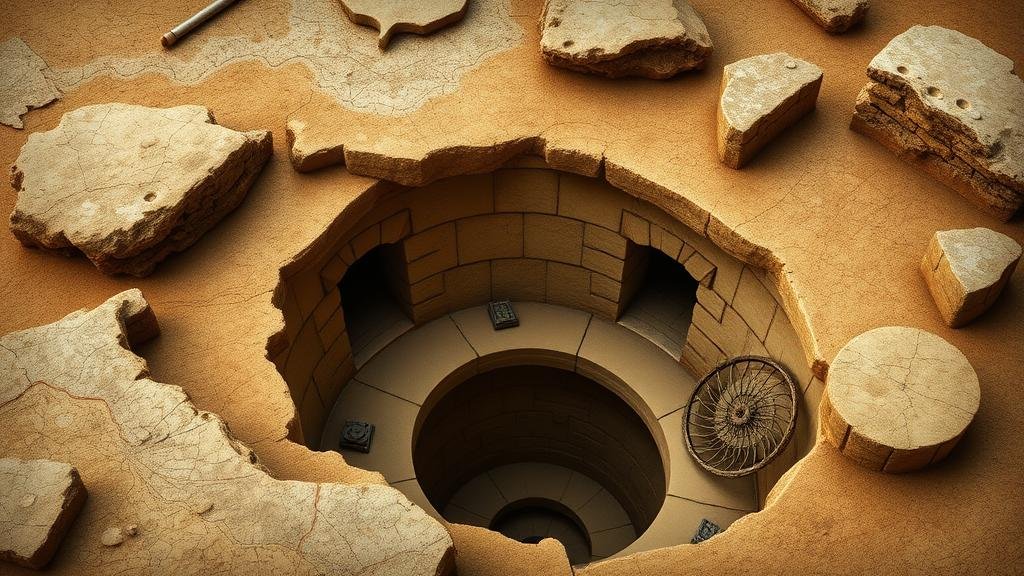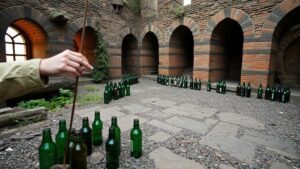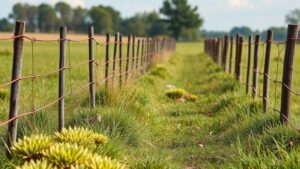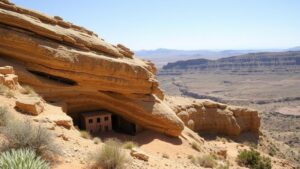Decoding Clues Related to Buried Wells and Secret Passageways on Maps
Decoding Clues Related to Buried Wells and Secret Passageways on Maps
Maps have long been essential tools for navigation, exploration, and discovery. Among the various elements they depict, buried wells and secret passageways evoke intrigue and adventure. This article aims to explore how to decode clues associated with these hidden features, providing insights for historians, archaeologists, and hobbyists alike.
The Historical Context of Buried Wells and Secret Passageways
Throughout history, buried wells have played a vital role in the establishment and survival of settlements. served not only as sources of water but also as strategic points for trade and defense. In contrast, secret passageways often took shape in times of conflict. These concealed routes were designed for evasion or escape and have been integral in various cultures.
- The Roman Empire utilized aqueducts and hidden wells to ensure adequate water supply in times of siege.
- Dungeons and escape routes in medieval castles highlight the importance of clandestine passageways in protecting nobility.
Understanding Map Symbols and Legends
Deciphering maps requires a basic understanding of symbols and legends. Icons representing buried wells and secret passageways often follow standardized conventions, although variations exist based on the period and region. For example, an “X†may signify a buried treasure, while a blue circle often indicates a water source.
Also to symbols, the legend of a map provides crucial information about its context, including scale, date, and possibly the surveyors intentions. For example, a historic map from the 17th century may feature annotations denoting “old well†or “hidden passage,†requiring careful examination.
Analyzing Map Topography for Hidden Features
Topographical analysis is a critical aspect when searching for buried wells or secret passageways. Elevation changes, contour lines, and natural landscapes provide clues about hidden infrastructures. For example, ancient maps may depict hills or valleys where water naturally collects, suggesting potential well locations.
Also, contour lines can indicate depression areas, which may hint at either abandoned wells or subterranean connections. A practical example can be traced to the archaeological investigation at the Knights Templars Jerusalem, where unique contour lines led to pentagonal wells that once provided fresh water.
Utilizing Historical Records and Oral Traditions
Complementing map analysis with historical records and local lore enhances the quest for hidden wells and passageways. Historical texts may document known wells or routes, while oral traditions can provide narratives that hint at concealed features. For example, in many Native American cultures, stories told across generations may allude to secret safe havens disguised by natural formations.
Recent technologies, such as Geographic Information Systems (GIS), allow researchers to overlay historical maps with modern datasets, revealing relationships between old data and current geographical realities. This process has proven beneficial in locating long-forgotten structures.
Real-World Applications and Case Studies
Several prominent studies exemplify the methodologies used in uncovering buried wells and secret passageways. One significant case involved the examination of the Grubb Family Farm in Pennsylvania, where historical maps were cross-referenced with soil analyses. Technologies like ground-penetrating radar (GPR) successfully identified buried wells that were no longer evident above ground.
Another illustrative case is found within the city of Paris, where underground maps have revealed the existence of a network of tunnels and passageways, once utilized for storage and escape during the French Revolution. Studies utilizing modern radar systems have confirmed these passages’ existence, further enriching our understanding of historical urban planning.
Actionable Takeaways
For enthusiasts looking to investigate buried wells or secret passageways in their locale, here are actionable steps:
- Familiarize yourself with local historical maps and their associated legends.
- Use GIS technology to analyze geographical data for clues.
- Consult historical records and engage local historians to gather insights.
- Incorporate ground-penetrating radar or similar technologies for non-invasive explorations.
By decoding these clues, researchers and adventurers alike can unlock the mysteries of the past, leading to significant discoveries about historic societies and their infrastructures.



